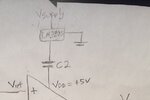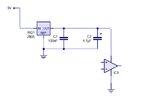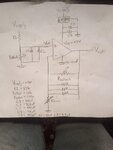shivasage
Junior Member level 1
Hello. I am attempting to follow **broken link removed**. I want to keep things small and cheap. How should I go about getting 5V DC for Vsupply and -1V DC (or less) for Vref? I was hoping to do this from a 9V DC source, but I am open to other ideas. I looked at voltage regulators but am not sure if I'd need a heat sink. If I went the battery route, I could use a 4/5AA for 1.2V, but that's a bit higher than I'd like, and also what would I do for the 5V? Please help a noob out!



